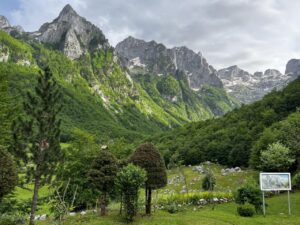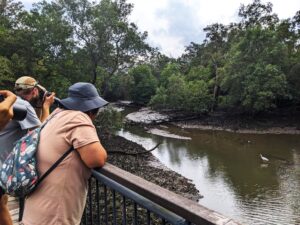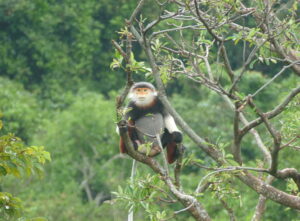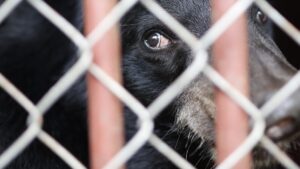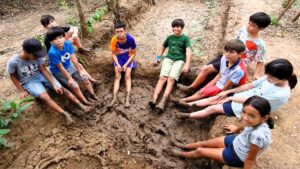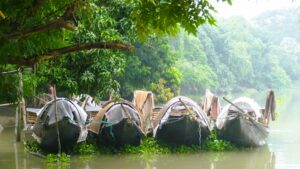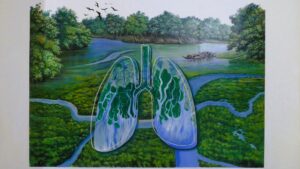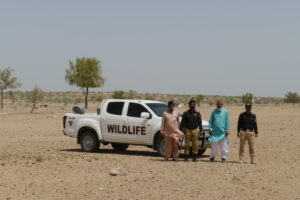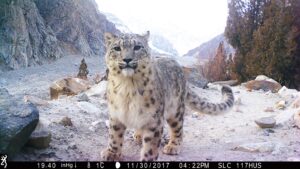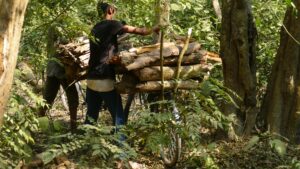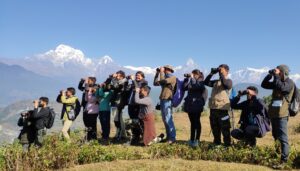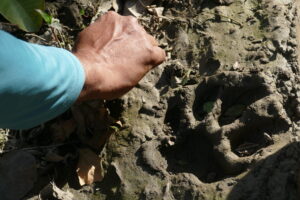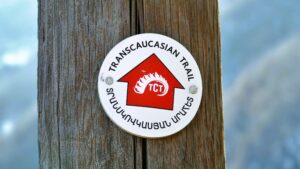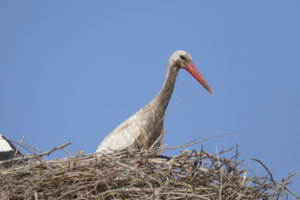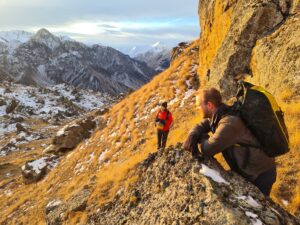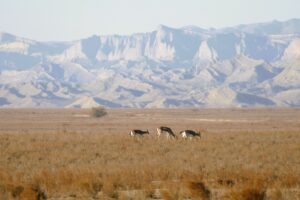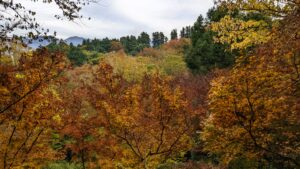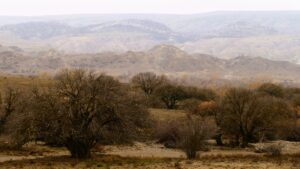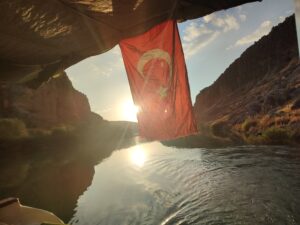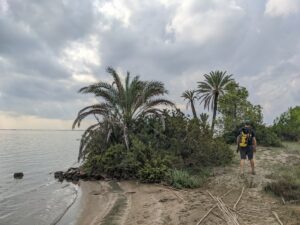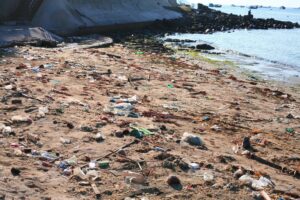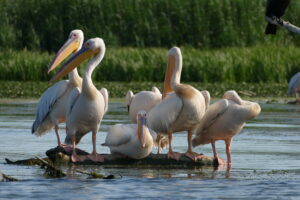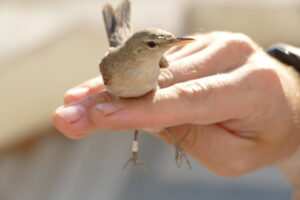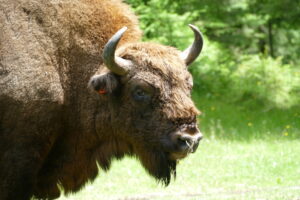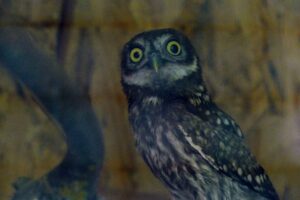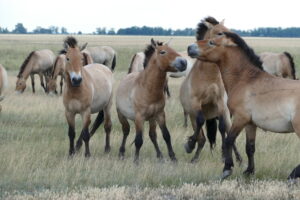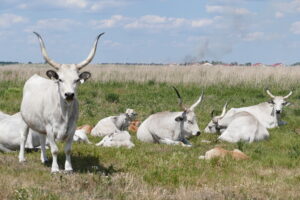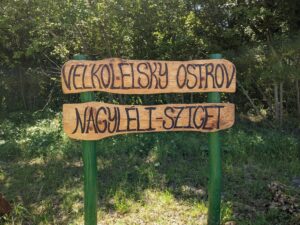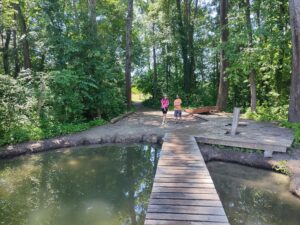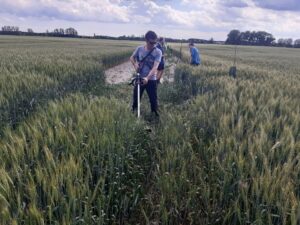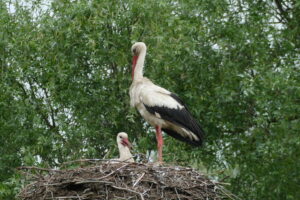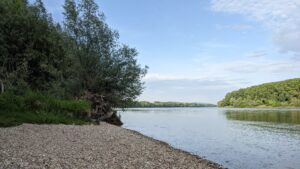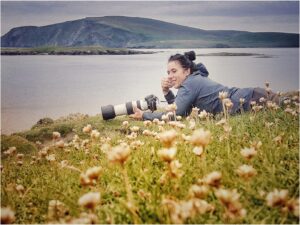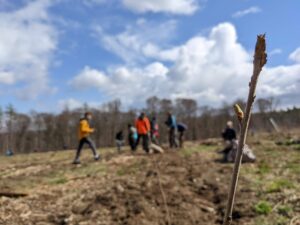
Our articles
Travelers' Map is loading...
If you see this after your page is loaded completely, leafletJS files are missing.
If you see this after your page is loaded completely, leafletJS files are missing.
- Montenegro – A unique nature threatened by foreign investmentImagine yourself walking along the coast of southern Montenegro, just a few kilometres from the beach. You can hear something rushing. It could be the sea but it’s actually the luxury car that just passed you. You remember a few years ago, when you were sitting here on the sand dunes watching all the different birds flying and hopping around. That was before Long Beach was destroyed by the construction of luxury buildings, fueled by the foreign investment which many people hoped would bring them financial success. Long Beach, a very important habitat for numerous plants and animals but also for the local population. Do we really want this to happen?
- Every Singaporean can be a naturalistWhere is the line between urban greening and nature conservation? How does the Nature Society, Singapore lead the charge in a citizen-based green revolution? Join us on a journey through Sungei Buloh, and explore how grassroots initiatives are reshaping the city-state’s landscape. From protecting mangroves to advocating for sustainable development, learn how active citizen engagement is key to preserving Singapore’s natural heritage!
- Bridging the gap: Mandai Nature’s mission to tackle biodiversity loss in South-East AsiaBiodiversity loss presents one of the most pressing challenges of our time. However, despite growing recognition of its importance, there exists a stark geographic misalignment between the magnitude of biodiversity loss and the financial and institutional resources allocated to address it. Singapore-based Mandai Nature is here to shift that and be a catalyst for the protection of some of South-East Asia’s most underrepresented species.
- Rat-hunting macaques: a greener solution for rodent pest control in Malaysian oil palm plantations?In the lush landscapes of Southeast Asia, oil palm plantations stretch across vast land, producing palm oil, one of the world’s most versatile and economically significant commodities. However, the cultivation of oil palm has long been accompanied by environmental concerns. In the quest for more sustainable practices, an unlikely ally has emerged from the depths of the rainforest: southern pig-tailed macaques.
- The Dusky langurs of Penang: Navigating urban life with finesseIn the bustling cityscape of Penang, Malaysia, amidst the cacophony of human activity, exists a quieter, more elusive population – the Dusky langurs. Although they are quite able to adapt to urbanisation, Dusky langurs face significant conservation challenges. The Langur Project Penang aims to promote coexistence in their new home, the urban jungle.
- Guardians of the blue: MareCet’s quest to save Malaysia’s marine mammalsDolphins, whales, porpoises and dugongs call Malaysia’s waters their home and play crucial roles in maintaining the ecological balance of their marine habitats. However, like many marine mammals worldwide, Malaysia’s wild marine sentinels face a myriad of threats. Join us, as we accompanied the MareCet team on their January dolphin survey on the west coast of Malaysia: two days out on the Malaysian waters on a small vessel of discovery and conservation, joining a team of amazing experts in marine conservation.
- Building a better future for elephants in Thailand: A tale of captivity, conservation, and ethical tourismDive into the intricate tapestry of Thailand’s elephant tourism scene as we unravel the compelling narrative of Ray and his sanctuary, ‘Following Giants.’ Against the backdrop of cultural tradition and ethical awakening, we explore the dynamic shifts and heartfelt struggles shaping the nation’s approach to human-elephant interactions. From the national parks to sanctuaries, join us on a journey toward learning about a more compassionate future for these beloved giants.
- Born to be wild: A quest to save the singing apes of South-East AsiaGibbons are renowned amongst primates for their loud and unique vocalisations. However, unfortunately, their extraordinary songs are an easy way for poachers to find them, and today, their numbers in the wild are drastically dropping, while they are popular pets purchased on the black market. But could there be a way to successfully rehabilitate and give gibbons that were rescued from the pet trade their freedom back? We hear the answer from two of the best gibbon experts in Thailand and Malaysia.
- From rescue centre to conservation breedingThe Angkor Centre for Conservation of Biodiversity, one of Cambodia’s first wildlife rescue and breeding centres is making outstanding achievements in the conservation breeding of globally threatened, yet often overlooked species.
- What every protected area should have: a lesson from the Central Highlands of VietnamAs we visit the Vietnamese Kon Chu Rang Nature Reserve, we understand what NGOs do here to build up an effective protected area management in an area that has lacked sufficient law enforcement and community awareness in the past.
- Here’s why primates in Central Vietnam are recoveringGreenViet is taking action to secure the future of red-shanked douc langurs and help communities respect biodiversity in Central Vietnam.
- BEAR SANCTUARY Ninh Binh – where bile bears find a happy endThe BEAR SANCTUARY Ninh Binh gives a new home to bears that grew up in horrible conditions to extract their bile.
- Turning the tide for Vietnam’s primatesVietnam is home to highest diversity of primate species on the South-East Asian mainland. However, 90% of these spectacular designs of nature are facing extinction threats due to the high demand for wild meat and wildlife parts used in traditional medicine. The Endangered Primate Rescue Center focuses on the rescue, rehabilitation, breeding, and release of Vietnam’s rare primates, many of which have been confiscated from wildlife traffickers.
- What does the future hold for the Mekong and its communities?The Mekong River bursts with color and life, hosts rich aquatic life and boasts one of the world’s most diverse and productive inland fisheries. However, massive hydropower projects are threatening the future of the Mekong ecosystem. That’s why communities living along the Mekong River Basin have joined hands to push for change.
- Inspiring awe for OurLand and natureAt OurLand, Vijo Varghese and his team have created a place for people to feel awe in nature and learn about sustainable living.
- The regeneration of the Sundarbans – community-driven action for the world’s largest mangrove forestThe Sundarbans, the world’s largest mangrove forest shared by Bangladesh and India, is threatened by coastal erosion, climate change, and deforestation. Many of those living near the Sundarbans exist below the poverty line, depending heavily on the forest’s resources. The Bangladesh Environment and Development Society (BEDS) helps these vulnerable communities benefit from ecological restoration in a unique way.
- How WildTeam fights for the tigers and the people of the SundarbansThe NGO WildTeam is protecting one of the most iconic animals in the world by helping the communities that live alongside the tigers of the Sundarbans.
- Sloth bear-human coexistence in MarwahiThe dry deciduous forests of Northern Chhattisgarh host one of India’s largest sloth bear populations. But unfortunately, sloth bears don’t have a good reputation here. Quite the contrary, they are considered by many to be one of the most dangerous wild animals in the area. Conservationists are now trying to identify the last islands with substantial bear populations in the region of Marwahi. But what will it take to protect Marwahi’s decreasing sloth bear population in a highly cultivated landscape?
- A thirteen-year battle to save the Hasdeo forests from coal miningThe forests of Hasdeo are called the lungs of India’s Chhattisgarh state. Sadly for its inhabitants, Hasdeo grows atop of a huge coalfield, and the government decided to start mining it. Fast forward thirteen years, the Save Hasdeo movement is fighting tirelessly against the total diminishment of the natural ecosystem of Hasdeo.
- Achanakmar – a reserve at a crossroadsAchanakmar is both a tiger reserve and biosphere reserve for its wildlife and unique landscape. But a lack of management and monitoring threatens nature in Achanakmar.
- What will the world’s largest refinery planned in Konkan do to local livelihoods and the environment?Destroying 12.000-year-old prehistoric petroglyphs for an oil refinery that will best (or worst) case scenario run for the next 50 years – this is what the Maharashtra government plans by erecting the world’s largest refinery in the Konkan region. However, locals are enraged.
- The return of Pakistan’s ungulatesUnfortunately Pakistan has lost most of its ungulate population in recent times, but a new project aims to reverse this in the near future.
- The last refuge of Asiatic lions needs extensionThe last Asiatic lions on Earth inhabit the Indian State of Gujarat. After being at the brink of extinction 100 years ago, the lion population is steadily growing, and the local community is overall supportive. But, new space is urgently needed, and Gujarat doesn’t want to share.
- Vadodara – the city of crocodilesThe 4-million city Vadodara and the villages around are an example how humans and crocodiles can coexist successfully.
- A place in the forestFor many people, a place in the forest is a vague dream fueled by their stressful big city lives. For Alex and Cristina, their place in the forest in the center of their life.
- High-level political stakes feed the illegal hunting of Cholistan’s rare wildlife Despite a hunting ban, to keep Pakistani elites and Arab dignitaries happy, the government of Pakistan gives them open access to hunt in the Cholistan desert, one of Pakistan’s major deserts. Meanwhile, the Punjab Wildlife Department fights a great battle to protect Cholistan’s fast declining populations of chinkara gazelles and migratory birds from poaching.
- The special connection of people and nature in Gilgit-BaltistanGilgit-Baltistan is a region that demonstrates like no other how our lives depend on intact nature around us. And it shows how vulnerable that makes certain parts of the world.
- Nature experiences beyond four walls Profound experiences in nature during childhood shape the way we develop as adults. Love for nature, curiosity and the sense of wonder cannot be evoked solely by long presentations inside a classroom. And this is the realization that motivated four sisters in the Pakistani capital of Islamabad to start their own, very unique nature camp, not only igniting the curiosity for nature within children, but also breaking the walls of expectations around women in Pakistan.
- A holistic conservation success story – Livestock insurance scheme to protect snow leopardsAs elusive as this big cat is, for the agro-pastoralist population of the Gilgit-Baltistan region of Pakistan, snow leopards are a real threat. Here we meet the NGO that became the global pioneer of developing a livestock insurance scheme connected to this vulnerable species, which many countries adapted since. So what lies in the center of the conflict, and how can such an insurance scheme lead to the conservation of the snow leopard and at the same time support local livelihoods?
- Trophy hunting as a conservation toolCan trophy hunting benefit conservation? This is a heated debate. In Pakistan, we found many people that are convinced by their system and have plenty of benefits to show.
- From Mowgli’s jungle to the peaks of AnnapurnaWe are excited to arrive in the Annapurna Conservation Area, to spend the next few days hiking the Annapurna Circuit, enjoying a landscape cradled within the Himalayas and observing one of Nepal’s iconic ‘Conservation Areas’ through our ecologist glasses. What we found simply amazed us: remote villages and monasteries showcasing a beautiful intertwining of Hinduism and Buddhism, the shifting landscape from jungle and terrace farmlands through dense alpine forests and rugged slopes to the abode of eternal snow, constantly surrounded by epic views of the Nepalese Himalayas. The Annapurna Conservation Area is the first protected area in Nepal that has allowed local residents to continue living within the boundaries after its establishment as well as play an integral part in the conservation of local nature.
- Suhelwa – a doomed sanctuary?Suhelwa is a small-overlooked wildlife sanctuary on the Indo-Nepalese border that suffers from corruption, mismanagement and a lack of local support. Can it still be saved?
- Protecting the underrepresentedAlthough rather small in size, Nepal is home to an outstanding diversity of plants, animals and ecosystems in a remarkable physical setting. The altitude varies between 60 m ASL in the subtropical Terai Arc to Mount Everest at 8849 metres. Within this range and diverse habitats, Nepal hosts almost 12,000 different species of flora, iconic animals such as the snow leopard, clouded leopard, bengal tiger, one-horned rhino, asian elephant, red panda and the pangolin. But what about those species and areas which don’t make the spotlight? Friends of Nature Nepal, a small team of passionate conservationists has been venturing into uncharted territories, rediscovering long-unrecorded species and stands up for the protection of many underrepresented or neglected species.
- The elephant in the roomElephants are beautiful, majestic and emotional individuals that are worshipped by Hindus. But they are also simply so big that in a fragmented landscape like the Terai, conflict with humans is hard to avoid.
- Living with big cats Before we arrived in India, we had a certain eurocentric picture of human-wildlife conflict and its challenging mitigation. Unfortunately, where humans and large carnivores share space, a diversity of conflicts can emerge. And across Europe, there is a low tolerance for the presence of these species. So what can we expect as we reach the Indian state of Uttar Pradesh, which is regarded as the second most affected state by human-tiger conflicts in the whole country? What needs to be done to make sure humans and big cats coexist peacefully now and in the future? Nowhere is this question more evident than in India, where around 32 million people are already living as next-door-neighbors to tigers in a country that hosts over 70% of the world’s remaining wild tigers.
- Peace for conservation, conservation for peace – can the Caucasian leopard bring people together in the Caucasus?Many of the world’s conflict zones are located in places where biodiversity is high. The Caucasus, being one of the world´s 36 biodiversity hotspots, is no exception. ‘Conservation and peacemaking has the potential to go hand in hand’. We took away this lesson from our journey in the Caucasus, where we met leading organisations and individuals in Georgia and Armenia working for the protection of the endangered Caucasian leopard. As we see from the example of the Caucasian leopard, aside from all other things, biodiversity needs to also be protected from the consequences of armed conflict. However, it also offers an opportunity for people to come together, resolve conflicts, join in the protection of shared natural heritage and ultimately, build peace. And maybe, the Caucasian leopard can lead the way on this journey.
- Dilijan National Park – a refuge for the threatened forests of ArmeniaDilijan National is a refuge for old-growth in a country where forest cover is sparse and the climate crisis will increase this problem.
- How FPWC conserves Armenia’s nature on the ground and on the screenFPWC conserves Armenian wildlife in the Caucasus Wildlife Refuge, rescues animals through its Wildlife Rescue Center and organizes the SunChild Environmental Film Festival.
- Transcaucasian Trail – more than just a hiking trailThe Transcaucasian Trail is more than just a hiking trail. It gives local communities new appreciation for local nature, new sources of income and creates a new international community of trail-builders that get to know the Caucasus in a new way.
- The curious case of Armenia´s oil-covered storks In 2017, the villagers of Hovtashen in the Ararat region of Armenia started noticing a strange phenomenon. The white storks they lived so closely with were not so white anymore – covered by a thick black substance, they were struggling to fly. As researchers and conservationists received the first alarm, they raced to help these iconic birds. Six years later, as we visit the Ararat plain, we see these contaminated storks with our own eyes and learn that putting an end to this disaster is still far away. But where does the substance come from and how can the contamination be stopped?
- Rioni – the overlooked refuge of sturgeonsSturgeons are iconic fish across the Northern Hemisphere. Nevertheless, few are aware that the Rioni river in Georgia is one of their most important refuges.
- Building forward better: pillars of successful nature conservation in GeorgiaIn our two months in Georgia, we have met many people who work in the field of nature conservation: protected area staff including rangers and visitor centre specialists, environmental NGOs, the government’s Agency of Protected Areas and activists to get an insight into nature conservation in Georgia has developed since the collapse of the Soviet Union and, most importantly, the way forward for the future. In this article, we want to cover three important pillars in Georgian nature conservation which we have not specifically covered so far: funding with a special focus on the Caucasus Nature Fund, the political agenda to enlarge the protected area network made possible by the Agency of Protected Areas, and the crucial work of rangers.
- A windy road to reintroduce goitered gazelles to the steppes of Vashlovani Vashlovani Protected Areas, which are often referred to as the Georgian Savannah, is the only region in Georgia which was once inhabited by the goitered gazelle. However, due to the unsustainable level of hunting and poaching since the 1930s, the range and numbers of this medium-sized grazer declined rapidly, and in the 1960s, the species was declared extinct in the country. Nowadays, Vashlovani hosts over 200 goitered gazelles thanks to trans-border cooperation and several rounds of trial and error, which shows the fragile process of species reintroduction. We had the chance to meet some of the key players who contributed to what eventually became a conservation success, while also being able to observe these and other majestic animals with our own eyes.
- How Lagodekhi wants to end poachingLagodekhi Protected Areas in East Georgia is home to beautiful pristine forests and mountains. And the administration is doing everything possible to protect this biodiversity from poachers.
- Ana’s fight to save the Dighomi MeadowsThe Dighomi Meadows are an important floodplain in Tbilisi that has been heavily polluted within a few years. One woman is fighting tirelessly to save it.
- Where does biodiversity protection end?Biodiversity protection does not only mean working with wildlife, but also improving locals’ lives. The project ECO.Georgia by the GIZ showcases this.
- A taste of the untouched nature of the CaucasusThe four days we spent in the winter wilderness of Borjomi-Kharagauli National Park took us through rich evergreen forests, alpine meadows and snowy high mountain peaks, while giving us a few new lessons on survival. Borjomi-Kharagauli encompasses one of Georgia’s last major intact forest wilderness, and provides refuge to many of the Caucasus´s rich wildlife, such as brown bear, wolf, chamois, lynx and red deer. It is the first national park of the country, established after the collapse of the Soviet Union, and has faced many difficulties from the early days onwards in the attempt to stop poaching and illegal logging. Nowadays, the efforts to protect this unique biodiversity are intensified, while local communities have realized the potential of sustainable ecotourism.
- Once decimated, now returning – East Caucasian tur monitoring with NACRESThroughout its 30 years of existence, NACRES has become a centrepiece in the conservation puzzle of Georgia. We had the chance to accompany the conservation team on their field work to monitor the East Caucasian turs in the mountainous Kazbegi National Park. We spent the days searching for Caucasian turs on the majestic slopes of the Kazbegi National Park, while the evenings were filled with talks about Georgian biodiversity, human-wildlife conflict, effectiveness of protected areas and capacity building of rangers.
- The Alpine Garden of AdjaraThe Alpine Botanical Garden in Adjara collects native sub- and alpine plants of the Caucasus ecoregion to preserve, research and promote them.
- How SABUKO protects an overlooked part of GeorgiaSABUKO, the Georgian BirdLife partner, is putting all its effort into protecting the Chachuna Managed Reserve, an overlooked protected area in the Southeast of Georgia.
- A genetic technology that will reveal the true biodiversity of the CaucasusWith modern genetic sequencing techniques, DNA barcoding has the potential to dramatically accelerate the inventory of biodiversity on Earth, providing a basis for global conservation monitoring. Just like we began to record weather in the 19th century, which now provides the information that allows us to recognize the climate crisis and make predictions for the future, DNA barcoding provides similar opportunities for biodiversity.
- Quo vadis, Turkey’s nature?Turkey´s nature is diverse, valuable, beautiful and in many places intact. However, it is also under acute threat. What threatens it and where is it heading?
- The wild nature and fierce guardians of Turkey´s Munzur valleyDeep in the rugged landscape of Eastern Anatolia lies one of the most scenic and biodiverse regions of Turkey. At the same time it is also the country´s biggest conflict region. Its inhabitants, the resilient Alevi Kurds have been long fighting to protect their home, long-standing traditions and whole identity.
- The Yumurtalik lagoons between land and sea, biodiversity and humansIn the Yumurtalik Lagoons National Park, land meets sea and extraordinary biodiversity meets human threats.
- An office without wallsNature conservation is not a nine-to-five job. Nature provides us with endless questions to answer if we are curious enough. With over 20 years of experience in bird watching, bird research, nature conservation and nature education both in Turkey and abroad, Lale Aktay and Özgün Süzüer have seen and experienced many sides of nature conservation, and we are eager to find out what drives them. We talked about research and on-site conservation of birds, the importance of knowledge transfer, building a network and being a role model for youth. Moreover, we heard about a successful initiative combining cycling with nature observation and got a glimpse into the field of ethno-ornithology.
- The unknown future of the northern bald ibisWhen we went to Birecik on the shores of the Euphrates in South-East Turkey, we were excited to see a special bird, the northern bald ibis. When we left, our thoughts and emotions were in a turmoil over the fate of the birds we saw.
- The widely misunderstood striped hyena of TurkeyJoin us as we accompany İsmet Ceyhun Yildirim, Turkish hyena expert and coordinator of the Anatolian hyena project on a unique four-day journey to find the elusive striped hyena!
- The intricate web of nature protection in HatayAs we approached the province of Hatay, we had no idea yet how intricate and strong the nature protection community really is here. But soon enough, we found out that like the underground network of trees in a forest, the protectors of Hatay developed a unique and diverse network, consisting of academicians, conservationists, media personnel and nature enthusiasts, working as coordinated as we have not seen before. And what are they protecting? Taking up only 0.7% of Turkey, Hatay hosts 60% of all of the country’s mammal species. Moreover, it is a major bottleneck for migratory birds and hosts some of Turkey’s most important wetlands belonging to the Asi river basin.
- The return of the mountain gazelle in TurkeyUntil 2008, the mountain gazelle was considered extinct in Turkey. In the fourteen years since then, the population has grown to 1500 individuals thanks to Yaşar Ergün and Hatay Tabiatı Koruma Derneği.
- One world, one water and one chance to safeguard itThe Black Sea is one of the world’s most isolated seas, and the largest anoxic body of water on the planet (87% of its volume is anoxic). It has also been called Europe’s most polluted sea. In Trabzon along the Turkish Black Sea coast, we sat down with researchers Dr. Muzaffer Feyzioğlu and Dr. Coşkun Erüz from the Karadeniz Technical University to discuss the state of marine conservation, microplastics and people’s attitudes towards marine litter.
- The never-ending fight to keep Artvin greenThe Green Artvin Association has been fighting against mining and excessive hydropower construction for almost 30 years. They should be an inspiration for any grassroots environmental movement.
- Traditional ecological knowledge: our heritage and our survival strategyCeren Kazancı and Soner Oruç are ethnobiologists, studying traditional ecological knowledge in the Western Lesser Caucasus at the Turkish-Georgian border region, one of the 36 global biodiversity hotspots of the world. Like other ethnobiologists, they recognize that indigenous peoples, traditional societies, and local communities are critical not only to the conservation of cultural and linguistic diversity, but also biological diversity.
- The Nature Conservation Centre, the hub of innovative conservation solutionsThe Turkish NGO Nature Conservation Centre (Doğa Koruma Merkezi) is a great example of how NGOs can use scientific expertise, practical experience and education activities to bridge gaps between authorities and people. Their projects include a creative spin on tackling the climate crisis, nature education, sustainable agriculture and biodiversity protection.
- How Kuzey, a student, brings back the forests of AnkaraThe young biology student Kuzey dedicates his life to reforesting his hometown Ankara.
- Birds unite our changing world“Birds unite our changing world”. This sentence welcomes the reader on Lider Sinav´s blog called Kuş Notları (“Bird notes”). As a six-year-old boy, Lider opened his first field guide for birds, a German book he received from his Swiss mother. And from there on, he was fascinated by birds. Now, even though he is only 29, he is only one of the most knowledgeable ornithologists of Turkey and has conducted fieldwork in research and conservation all over Turkey.
- Strandzha Nature Park – The biggest and most diverse protected area of Bulgaria, that you might not have heard about yetJust a few days before we were in Strandzha we didn´t know anything about it. Much less even that it is the biggest and most diverse protected area in Bulgaria and of importance far beyond. When we left, we had a completely different view of Strandzha Nature Park that is overlooked by so many. We don´t even know why. All we know is that it deserves far more attention and protection.
- Building a conservation community in BulgariaAs nature protection cannot be divided from politics, it has also been strongly influenced by the past years of political turmoil in Bulgaria. In response, throughout the last years, civic movements have mushroomed in the country to protest against various threats to the environment, coordinated by the biggest Bulgarian environmental NGOs. We visited the Bulgarian Biodiversity Foundation, who set out to build a resilient and growing community of conservationists.
- The bird lagoons of BulgariaOne of the biggest wetlands along the Black Sea coast are the Burgas lakes in Bulgaria. The five lakes and their surrounding wetlands cover almost 100 km² and on the right days, you can see thousands of birds here. We met up with the NGO ‘Green Balkans’ and the NGO ‘Bulgarian Biodiversity Foundation’, two organizations that run projects for their protection, and learnt about the complex interrelation of traditional salt production and biodiversity in two hypersaline lagoons.
- Seven reasons to visit the Danube DeltaThe Danube Delta draws you into a different world dominated by water, inaccessible reeds and birds.
- The turbulent history of the Agigea sand dunesWe visited the Agigea Ornithological Observatory on the Romanian black sea coast to talk about why ringing birds is so important and what we can learn from it. What we did not expect is to learn about the 100-year-old protected sand dunes located in just next to the port of Constanta. The ‘Dunele Marine de la Agigea’ (sea dunes of Agigea) are in fact the only natural sea sand dunes left on the entire Romanian coastline outside the Danube Delta. But how can a 100-year-old, so strategically located protected area survive world wars as well as communism? Not easily, we can tell you this much…
- If you like it, then you shoulda put a ring on it!The Dobrogea region in southeastern Romania is part of the Eurasian-East African Flyway, one of the important migration corridors for birds that follows the western coast of the Black Sea. To learn more about conservation in this region, we headed to the Black sea coast to visit the Agigea Ornithological Observatory, as it is the first and only permanent ringing and bird migration research station in Romania. But why are birds even ringed, how do you ring them and what are the challenges? Let´s find out!
- After 200 years, bison roam the Făgăraș Mountains again, and we set out to find themOn our second day with Conservation Carpathia, we joined Ionut and Robert, two rangers working on the reintroduction of the European bison to the Făgăraș mountains. CARPATHIA started with the reintroduction of this large herbivore three years ago, and by now there are four groups in two localities within the project area. We accompanied Ionut… Read more: After 200 years, bison roam the Făgăraș Mountains again, and we set out to find them
- CARPATHIA creates a better future for nature and peopleThe Foundation Conservation Carpathia has deeply impressed us with their holistic and extensive work in the Fagaras mountains.
- Piatra Craiului National Park in picturesPiatra Craiului National Park is full of natural treasures and Carpathian views that will stun every visitor. Follow us on a photo journey through the park.
- The early bird catches the wormMany people dream about being their own boss but hesitate because of the risks. This especially applies to the nature conservation field, which is highly underfunded across the globe. Young conservationists have a difficult time finding a job with limited placements available and big international competition out there. However, passion, perseverance and boldness can always… Read more: The early bird catches the worm
- Przewalski’s horses in HortobágyIn Hortobagyi National Park, you can find the largest herd of Przewalski’s horses, the last wild horse species in the world. Walking amongst 300 wild horses is a window in the past and hopefully in the future.
- A steppe in the heart of EuropeAfter some quality time with friends in Budapest and two very interesting visits, we headed towards the Hungarian Puszta, as we were eager to see a very special landscape you don’t often experience in Europe. If you don´t speak Hungarian, the word ‘Puszta’ might not have any meaning to you. So, let us enlighten you:… Read more: A steppe in the heart of Europe
- Protecting a hermit in the Szénás hillsHow would you react if you were told that in the neighboring forests just at your doorstep, scientists defined a completely new plant species? Moreover, that this species can be found nowhere else on the planet, only there, close to your home? We would be fascinated, and so were the inhabitants of Pilisszentiván, a small… Read more: Protecting a hermit in the Szénás hills
- Spinning a CEEweb for biodiversityCEEweb is a NGO that spins a web for biodiversity across Central and Eastern Europe. We met them in Budapest to discuss their activities and challenges. In the end, we got a special gift that will follow us for the rest of our journey.
- Gender equality in forestry – a call for change“More women than usual on this course. Good. We need them to file and sort papers”. This is what one of the instructors of Barbara Öllerer, a graduate forester and now PhD student, told the group of Austrian forestry students on a chainsaw course. Remarks like this are common among foresters. Only when she started… Read more: Gender equality in forestry – a call for change
- Veľkolélsky Island – a gem in the DanubeVeľkolélsky Island is the largest Danube island in Slovakia. The NGO BROZ has found the possibility to step-by-step purchase most of it starting 15 years ago and created a natural island that promotes both healthy river dynamics and ecotourism.
- The importance of local environmental education, and a good practice exampleIf you haven’t been to the Danube floodplains in their naturalness yet, if you haven’t experienced taking a boat and paddling into some mystical sidearms of the Danube, you must put it on your bucket list. Seriously. From its spring in Germany until it flows into the Black sea, the Danube created vast riparian habitats,… Read more: The importance of local environmental education, and a good practice example
- DunaVit – building grassroots power“We can draw from nature, we can take from nature, if we can and want to give back.” This is the official motto of DunaVit, a young grassroots environmental protection organisation based in Csallóköz, Slovakia. We are talking truly grassroots. Registered in November 2020, DunaVit is not even two years old, but has made major… Read more: DunaVit – building grassroots power
- Csallóköz Nature Park – a newly created chance for an exploited regionAranykert (Golden Garden), or Tündérkert (Fairy Garden), were names of Csallóköz / Žitný ostrov / Rye island, the place where Hanna grew up. Csallóköz is a river island in southwestern Slovakia, extending from Bratislava to Komárno. It lies between the Danube, its tributary Little Danube and Váh, and is a major part of the Danubian… Read more: Csallóköz Nature Park – a newly created chance for an exploited region
- Europe’s lifeline, the DanubeThe Danube is a special river – for biodiversity, humans and for both of us. It connects our home countries Germany and Slovakia plus eight other countries, more than any other river in the world. It’s the biggest river in Europe outside of Russia and 80 million live in its basin spread out in over… Read more: Europe’s lifeline, the Danube
- Thayatal teaches us how to observeThayatal National Park gives space to Wilderness and protects the Thaya valley at the Austrian-Czech border in cooperation with Podyji National Park.
- Why do we see clear forest patches all around us?Fueled by the climate crisis, many spruce stands in European forests have suffered from bark beetle outbreaks in the last years. Why does this happen and how should we react to it?
- Art as a mirror for nature – an artist´s thoughtsWe met Britta Wahlers in 2019, when we were working for the European Wilderness Society. We organised a project called WILDArt, which aimed to take various artists into pristine nature, with the intention of finding inspiration in the nature surrounding them, and ultimately, create nature-inspired art. We spent a wonderful week as a group together… Read more: Art as a mirror for nature – an artist´s thoughts
- When the river connects and not dividesPodyjí National Park is the smallest national park in the Czech Republic and forms a unit with the Thayatal National Park on the Lower Austrian side across the border, protecting unique habitats along a 40-km-long, deep, meandering valley carved by the Dyje river (Thaya in German). The Dyje river serves as a border river between… Read more: When the river connects and not divides
- A journey with the bark beetle, and a door into wilderness in ŠumavaŠumava National Park celebrated its 30 year anniversary in 2021. In thirty years, society has changed a lot. Healthcare, education and forestry, and of course nature protection. Today, Šumava National Park has a strong focus on wilderness. Giving nature freedom, not interfering in its processes. An approach that is still somewhat debated in the nature… Read more: A journey with the bark beetle, and a door into wilderness in Šumava
- Šumava – the meandering path of a national park through changing times and political climateA couple months back when we planned our route going through the Bavarian Forest National Park and crossing the border into Šumava National Park, we had no real knowledge about the complex history of Šumava. We had some sense of course – cycling the Eurovelo 13, also known as the Iron Curtain Trail, offered us… Read more: Šumava – the meandering path of a national park through changing times and political climate
- Urban Nature – biodiversity in your backyardWe started this project to visit amazing nature around Eurasia. The Danube floodplains, the Carpathians, the Turkish mountains, the Caucasus, the Central Asian Steppe, the rainforests of East Asia. Some of the most impressive natural areas in the world. But nature does not only exist there and biodiversity is also not only threatened there. Nature… Read more: Urban Nature – biodiversity in your backyard
- Wildlife Genetics – a conservation game changerWe, humans have irreversibly altered the physical environment, and thus habitats of animals, plants, and other organisms that live on Earth. Conservationists look at all the individuals, populations and ecosystems that have been affected by habitat loss, exploitation, and/or environmental change, with the aim to make informed decisions that will ensure their survival into the… Read more: Wildlife Genetics – a conservation game changer
- Naturpark Taunus – an organization connecting the metropolis of Frankfurt with local natureOur second visit was a personal one for me (Jonas). My first ever job in nature conservation was at the Naturpark Taunus, a nature park located in the Central Upland range of the Taunus mountains in Central Germany with an area of 1348 km2. I did a voluntary year called “FÖJ” here after I graduated from high school. Shortly before… Read more: Naturpark Taunus – an organization connecting the metropolis of Frankfurt with local nature
- Planting trees to harvest drinking waterAmong the threats to environmental security at international and national level, the issue of drinking water scarcity is a prominent one. We have recently accompanied a community-powered project in Germany that aims to tackle this problem at the root!
